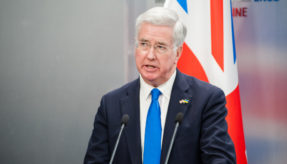
Defence Secretary Michael Fallon has today announced that over £4Bn will be invested to create a better defence estate for the UK’s Armed Forces and their families.
The ‘Better Defence Estate’ strategy is a review of Ministry of Defence (MOD) land headed up by military leaders to deliver a more efficient, modern and capability-focused defence estate. In the most significant changes to defence land since the Second World War, 91 sites owned or managed by the MOD are set to be sold. Every penny raised from the sales will be reinvested back into defence, creating areas of military expertise in specific locations around the country.
Defence Secretary Michael Fallon said: “We have been spending billions maintaining a defence estate that doesn’t meet the needs of our‘Better Defence Estate’ strategy. This plan delivers an estate fit for our forces and their families. By putting money where it is needed, we will provide better facilities to train our Armed Forces and deliver more stability for military families.”
As well as saving the taxpayer money – around £140M by the end of the decade – the changes will reduce the number of personnel being regularly moved between different bases, providing greater long-term stability and certainty for our Armed Forces and their families. The plan will see sites and bases moved to locations that offer better opportunities for military families – increasing employment prospects for partners and spouses, helping them to settle into communities, buy their own homes and have their children benefit from more stable schooling.
Today’s announcement follows a pledge by Mr Fallon last week to invest over £1.1Bn in facilities on Salisbury Plain to support troops returning from Germany, meaning, in total, more than £5Bn has been earmarked to defence infrastructure in the last two weeks.
More than 32,500 acres of excess defence land is being released, including ten surplus airfields and five golf courses, which will support the MOD in achieving its target to provide enough land for 55,000 homes, helping the Government contribute to its target of 160,000 new homes by 2020. There will also be significant economic benefits, providing employment opportunities for construction and the service industries across the UK.
The Defence Secretary also confirmed today the intended future locations for a number of the 35 sites the MOD has already announced are due for release.
Key facts
• The Better Defence Estates strategy will reduce the size of the built estate by 30 per cent by 2040 and will meet our SDSR commitment.
• Our plans will derive savings of over £140M of running costs over the next 10 years, rising to nearly £3Bn in total to 2040, to be recycled into Defence. This is in addition to the £4Bn which will be spent over the next 10 years.
• £4 billion comes from: £1bn from defence estate disposal this decade, £1bn of estate enhancement funds from the spending review and £2Bn under the ‘Public finance 2’ scheme.
• As at 1 April 2016, the MOD currently controls around 2% of UK land, owning more than 568,000 acres of land and foreshore in the UK (either freehold or leasehold) and holding the rights over a further 548,573 acres.
• The estate includes approximately 50,000 houses, 60,000 technical assets such as hangars or workshops and 20,000 other key assets such as runways and electrical networks.
• The cost of maintaining this estate is significant, approximately £2.5Bn per annum and spread across too many inefficient assets and sites.
• Approximately 40 per cent of our built assets are over 50 years old and do not meet the needs of a modern fighting force.
• The size of the built estate has reduced by 9 per cent since 1999/00 compared to a total personnel reduction of 36 per cent.
If you would like to join our community and read more articles like this then please click here







